Three quarters of butterfly species are in decline in the UK, but you can play a key role in providing colourful visitors with much-needed habitats.
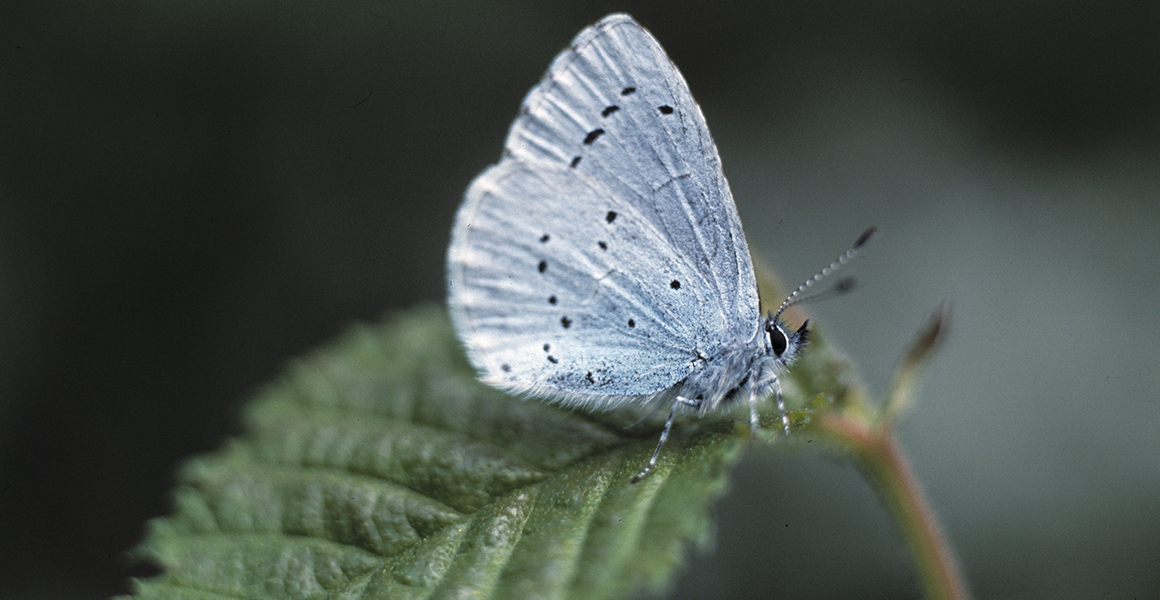
A holly blue butterfly in our gardens.
Even small gardens in built-up areas can support a great variety of butterflies if they contain the right plants. In the heart of London, 23 species of butterfly and many more moths have been recorded in our gardens.
Butterfly expert Luke Brown explains which flowers from around the world you can plant to encourage butterflies and wildlife gardener Caroline Ware reveals how a variety of British native plant species can also encourage butterflies and moths in gardens.
Buddleia
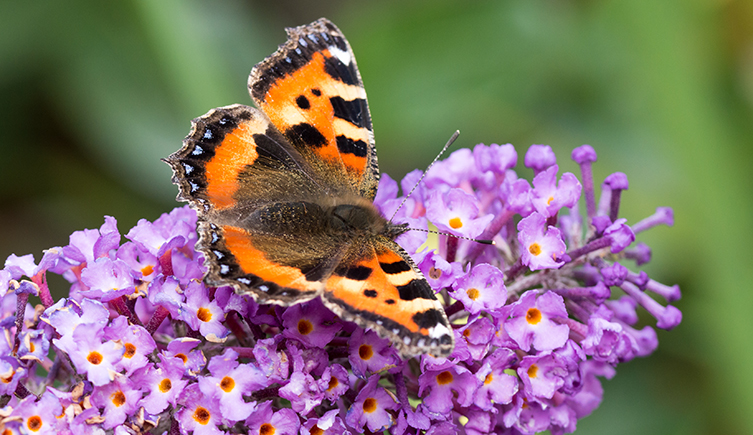
A small tortoiseshell butterfly feeding on buddleia flowers. © Linda Bestwick/Shutterstock
A buddleia is also called a butterfly bush, and for good reason – its rich supply of nectar attracts a wide range of native British butterfly species.
The blooms peak in August and do best when planted in a sunny or partially shaded area in a garden.
“Many traditional gardeners will want to stick with native species, but there some amazing flowers and plants from around the world that attract British butterflies that I use in my own garden,” says Luke.
“Buddleias are one of the best nectar sources for our butterflies that you can plant. There are smaller varieties such as buddleia buzz that are more suitable for smaller gardens.”
“It’s important to prune buddleias in spring. I cut back mine in March to keep them growing well.”
Common lilac
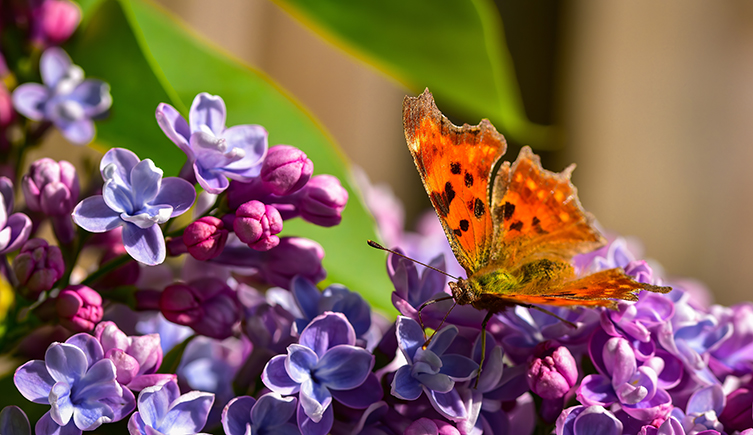
A comma butterfly on a lilac flower. © The World Traveller/ Shutterstock
The common lilac, Syringa vulgaris, is a medium-sized deciduous shrub that can be planted in spring or autumn. It provides a rich source of nectar for butterflies when it blooms in May and June.
Lilacs need a lot of sunlight and good drainage to bloom well, so choose a south-, west- or east-facing site that offers plenty of light and not too much water.
Deadheading the flowers regularly is also good for butterflies.
“Deadheading helps produce more flowers and nectar for butterflies to feed on,” Luke explains.
English lavender
English Lavender, Lavandula angustifolia, is a fragrant shrub. It’s best planted in the spring once the weather has begun to warm up.
Lavender blooms throughout the summer and is a food source for a variety of British butterflies during these months.
Just like the lilac plants, lavender thrives in full sun and well-drained soils. It does particularly well in chalky, alkaline soils.
Keeping garden flowers well-watered helps the plants to produce more nectar for butterflies and other pollinators.
Common honeysuckle
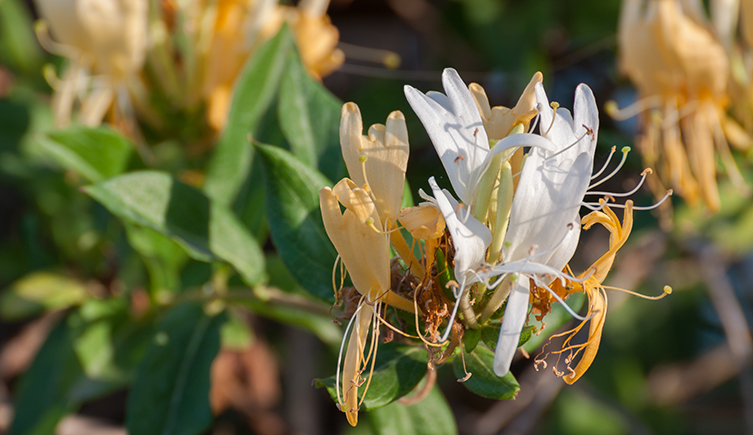
European honeysuckle is a source of nectar during the summer months. © Haline Pawlak/Shutterstock
Common honeysuckle, Lonicera periclymenum, is a deciduous climber that flowers during the summer months.
This honeysuckle does well in a wide range of aspects and soils, either in full sun or partial shade.
“Honeysuckle is great for attracting butterflies, but it also offers a great nectar source for moths, which are attracted by the powerful scent of the flowers in the evening,” says wildlife gardener Caroline.
It’s not necessary to prune honeysuckle and it’s an ideal plant for wildlife gardens. You can prune it in winter if it’s taking up too much space in the garden.
Stinging nettles
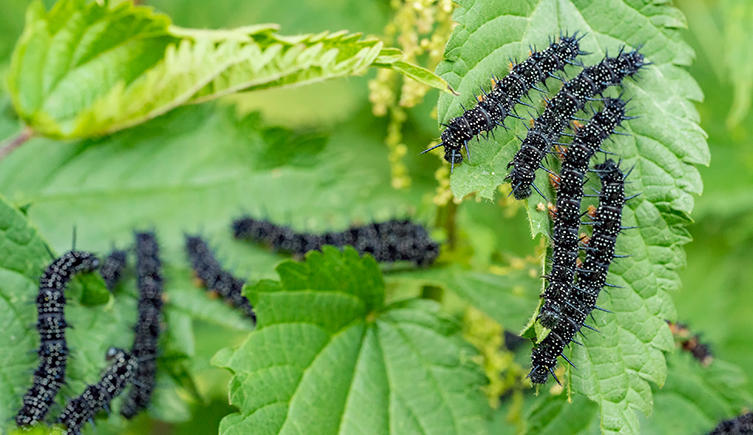
Stinging nettles are an important food source for peacock butterfly caterpillars. © Prill/Shutterstock
Stinging nettles, Urtica dioica, don’t always have the best reputation among gardeners, but they’re a crucial part of the ecosystem for many British butterfly caterpillars.
“Host plants for caterpillars are essential to promote butterflies in your garden. Adult butterflies generally feed from the nectars of flowers, but caterpillars don’t necessarily benefit from those plants, and often favour other host plants,” says Luke.
“Stinging nettles are one of the most important plants in terms of the percentage of British butterfly caterpillars that will feed on them. There’s also a non-stinging variety for gardens where small children play.”
“Nettles are the food plant for the caterpillars of red admiral, small tortoiseshell, painted lady and comma butterflies.”
“It’s important to treat your nettles like any other garden plant if you’re growing for the benefit of butterflies. Cut them regularly to get good fresh growth from the nettles.”
Grasses
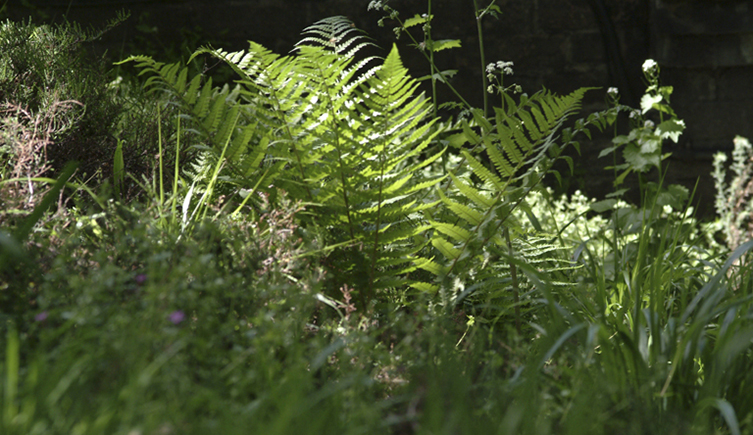
A woodland glade.
Leaving a wilder of area of your garden, featuring long-growing grasses, provides a helpful habitat for butterflies.
Small meadow areas are ideal habitat for certain British butterfly species. They can provide both nectar plants, such as oxeye daisies and knapweed, and grasses including cock’s-foot and fescues for meadow brown, large, small and Essex skippers to lay their eggs on.
“Speckled wood butterflies thrive in dappled shade and lay their eggs on woodland grasses such as false brome,” says Caroline.
Reserve a place where you can allow grass to grow long and see which species come to visit.

British wildlife
Find out about the plants and animals that make the UK home.
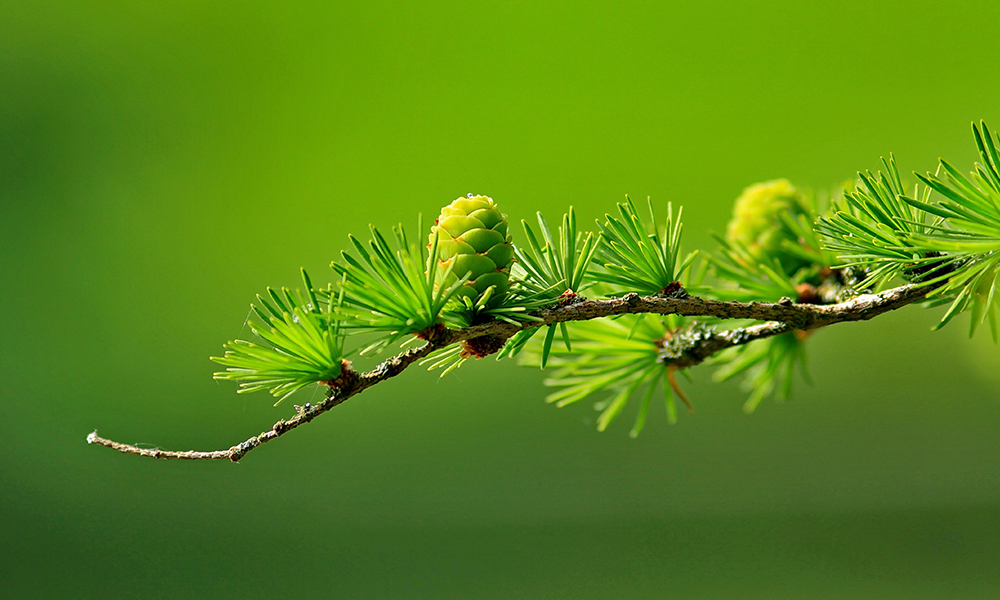
More fascination to feed?
Learn from top experts with our on-demand, online courses, designed for all levels of interest in the natural world.




Don't miss a thing
Receive email updates about our news, science, exhibitions, events, products, services and fundraising activities. We may occasionally include third-party content from our corporate partners and other museums. We will not share your personal details with these third parties. You must be over the age of 13. Privacy notice.
Follow us on social media